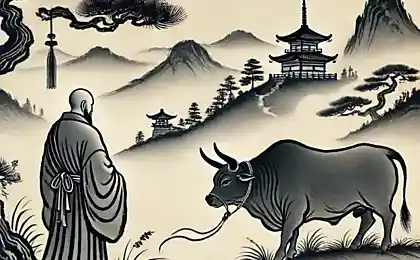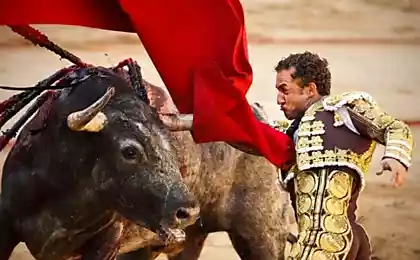2504
That's horn!
It takes only one glance to understand why so famous bull breed Watussi. This animal is one of the few who can boast the largest horns in the world. Their length from the tip of one horn to the other can reach 2 to 4 meters. Like many other bulls, Watussi stemmed from their common ancestor - a primitive round. Such an unusual name - vatusi - bull gave one of the African tribes - Tutsi (Tootsie) (Rwanda, Burundi). Others, such as the tribe Nkole (Nkole, Ankole) (Uganda) call it Ankole. They live in savannas and in open fields.
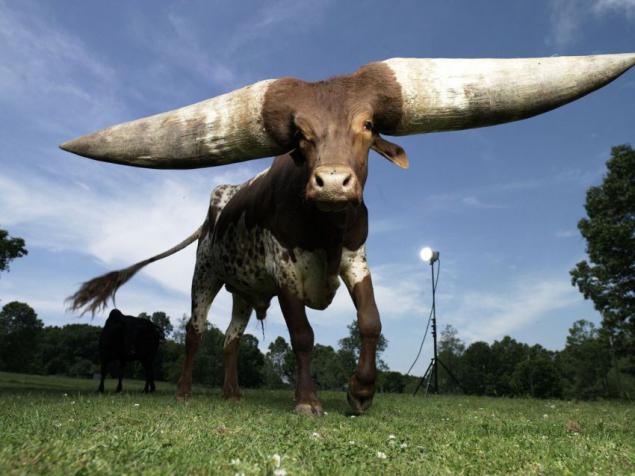
Since ancient times, the cows breed Ankole-vatusi considered sacred. They are almost never used as a source of meat, as the wealth of their owners is determined by the number of live cattle. All the attention was focused on the home side getting the maximum amount of milk, and even has developed a special technology.
All day the cow was grazing, and in the evening it fetches to the calf, which was allowed to make just a couple of sips to stimulate milk production. Then a cow milked, leaving little calf on a starvation diet. The same thing was repeated in the morning, eventually died young, and has not reached the age of maturity.
Historical homeland Watussi is Africa (Rwanda, Kenya, Uganda, Burundi), but due to its undemanding in food, after the 1960s, they quickly became widespread in other countries (in the United States, the Ukraine and the Crimea).
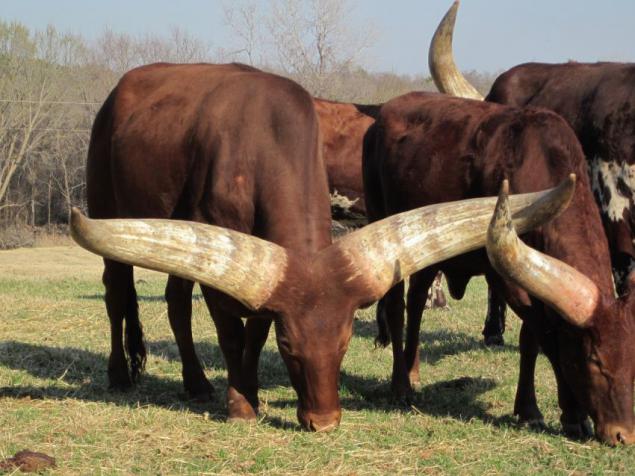
Weight Watussi adults can reach 400 to 750 kilograms. Newborn calves, compared with parents - fluff. They weigh only 14-23 kg and remain so for the first few months.
A distinctive feature of this breed bulls are their extra-long, powerful horns. Their total height may reach 1, 5 to 2, 4 meters. Instances with the largest horns are ranked as the king of the tribe and the economy become sacred.
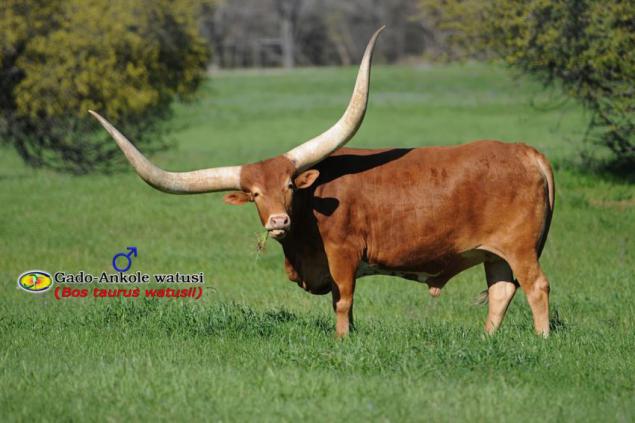
These horns are amazing not only for its length, but also the ability to thermoregulation. They are pierced by many blood vessels in which blood in hot weather cooling airflow. Then it re-enters the primary circulatory system by lowering the body temperature of the animal.
Watussi very unpretentious in food. Due to the special structure of the digestive system, they are able to eat even a very rough and sparse nutrients to foods. Their stomach is designed so that it will acquire all of the nutrients that eats its owner.
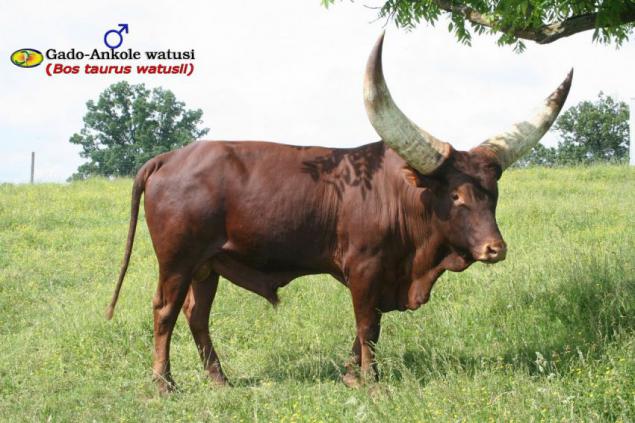
In Ankole-vatusi highly developed instinct to protect the young. Settling down for the night, the adults lie in a circle, and all the calves are driven to the center, for greater safety.

Watussi ancestors, primitive wild bulls (tours), about four thousand years ago in Africa came from the banks of the Nile, where to this day on the walls of the pyramids preserved their images. Around the same time, India and Pakistan on the territory of today's Ethiopia and Somalia moved humped zebu bulls, which are gradually crossed the Egyptian cows, resulting in a kind of appeared, which became the basis of many breeds of African cattle.

In the East African countries - Rwanda and Burundi, the offspring of the Egyptian and Indian bull named "vatusi" and their neighbors, Ugandan tribes Nkole, was given the name of a new breed of "Ankole».
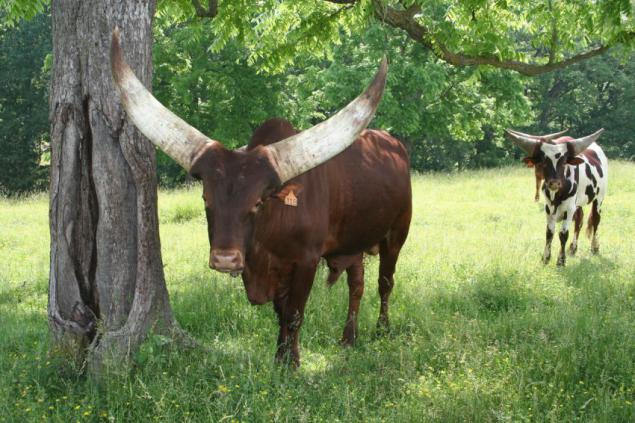
EU adult bulls reaches 600-730 kilograms of cows - 400-550, and the weight of the calf during the first months of life is not more than 15-23 kilograms.
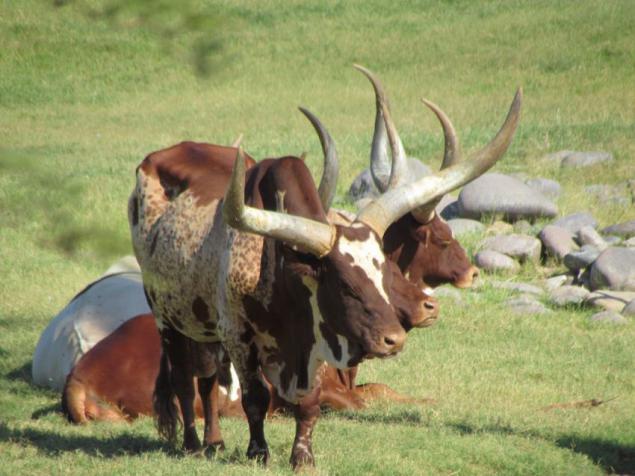
The main distinguishing feature of Ankole-vatusi - their long horns. Tutsi tribe, which is primarily associated these animals, called them "inyambo" - a cow with very long horns. The length of the horns Ankole varies from 1, 5 to 3, 7 meters. The most preferred considered liroobraznaya or cylindrical shape.
The longer the horn, the wider they are based, and the greater their owner gets the honors, and the highest level of the hierarchy - admission to the herd of the king of the tribe and the appropriation of the sacred status. However, in a privileged position and have to pay, holding the horns on his head, weighing about 45 kilograms each.
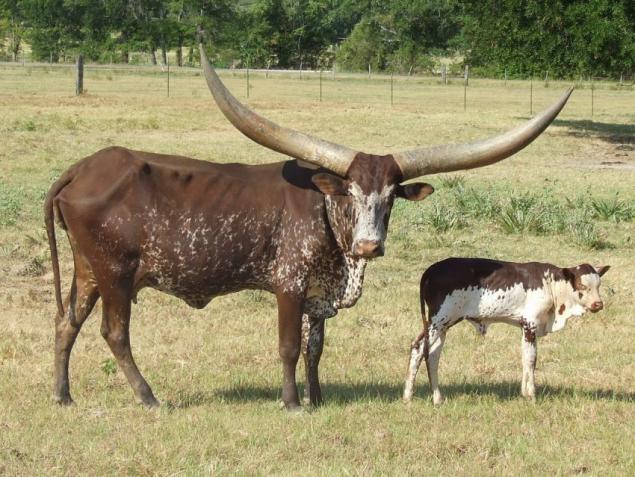
The main value of the horns of the animal - its thermostatic properties. Horn-Ankole vatusi act as radiators, in which the blood circulates cooling air flow in such a state at odds over the body, lowering its temperature. It is an irreplaceable habitat Ankole, where temperatures can reach 50 degrees Celsius.

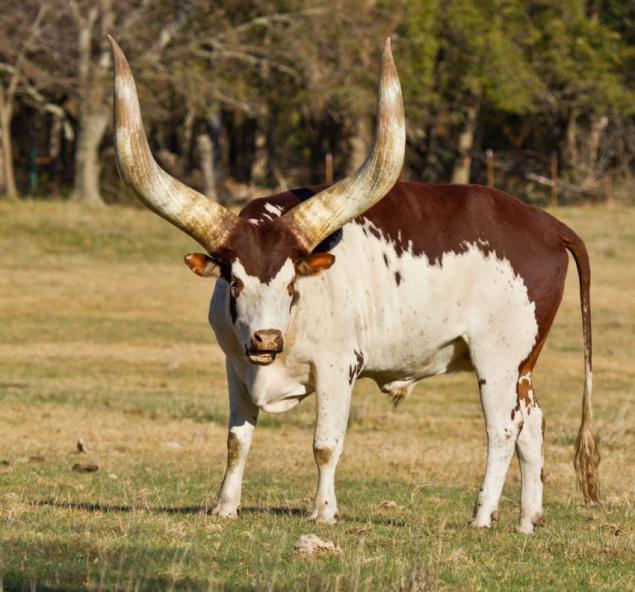
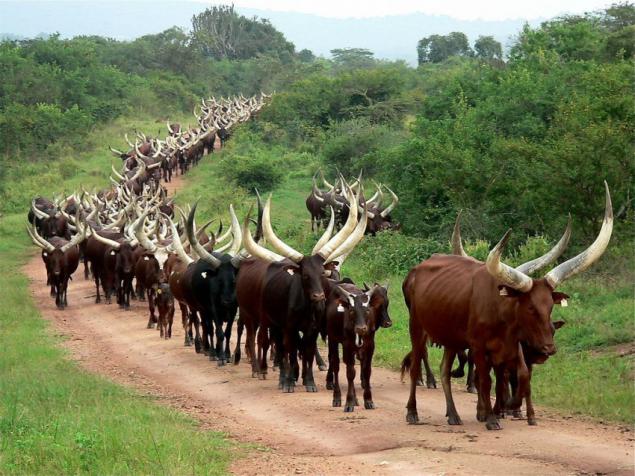

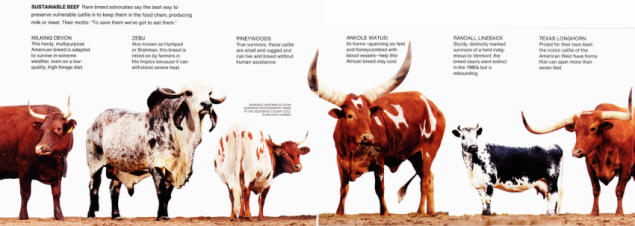

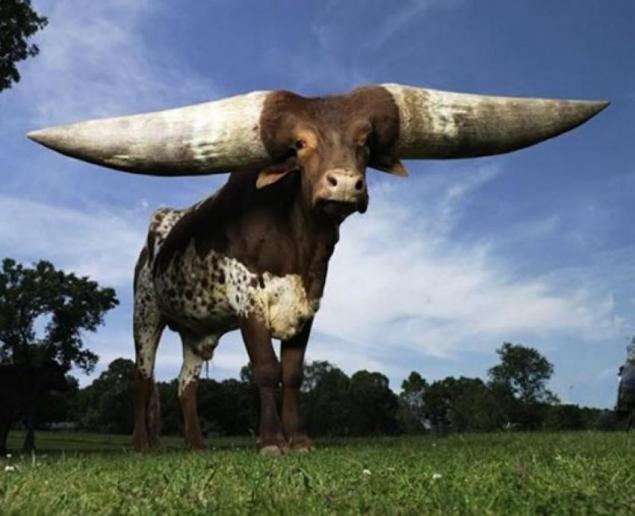
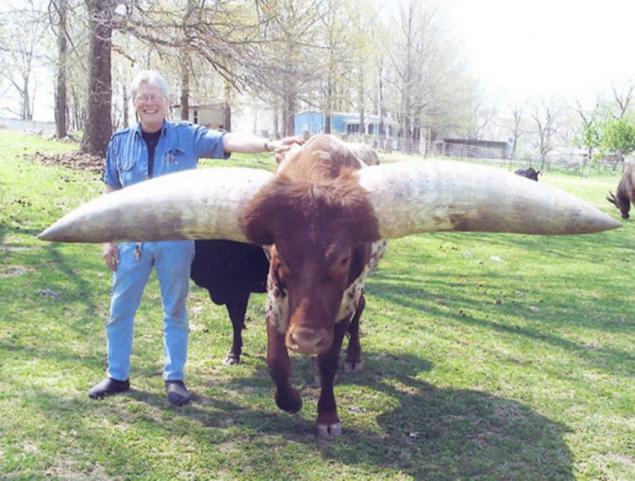
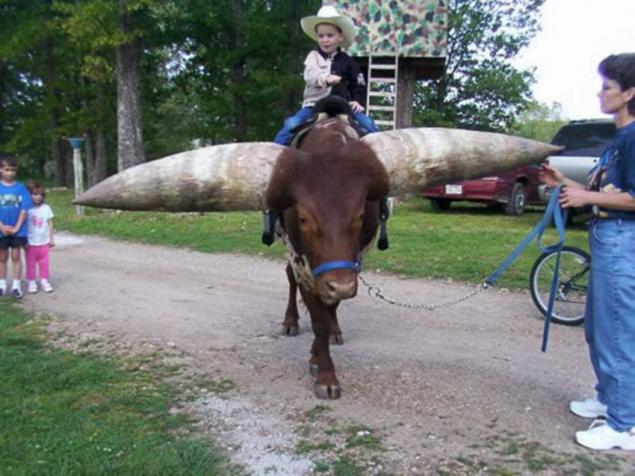

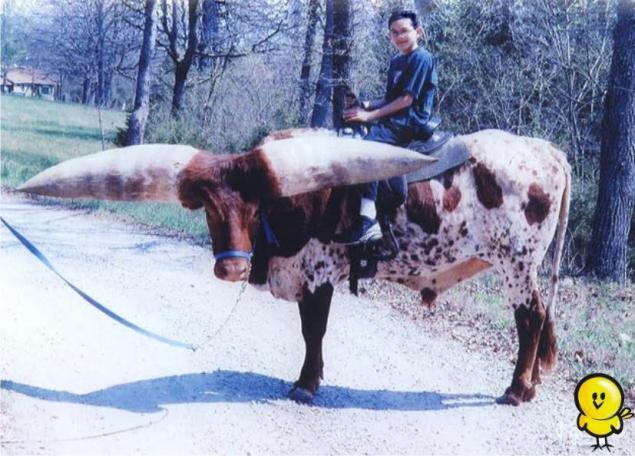


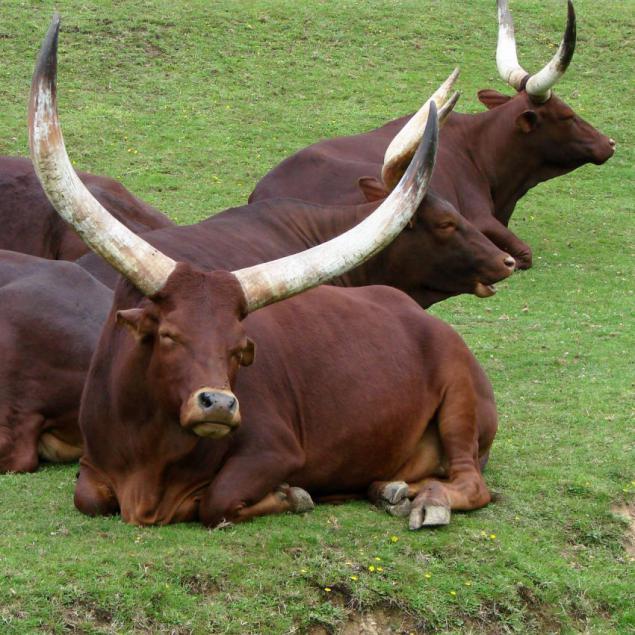
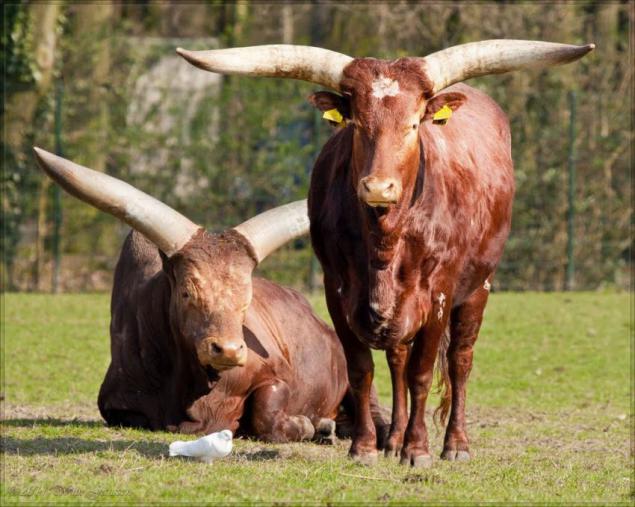

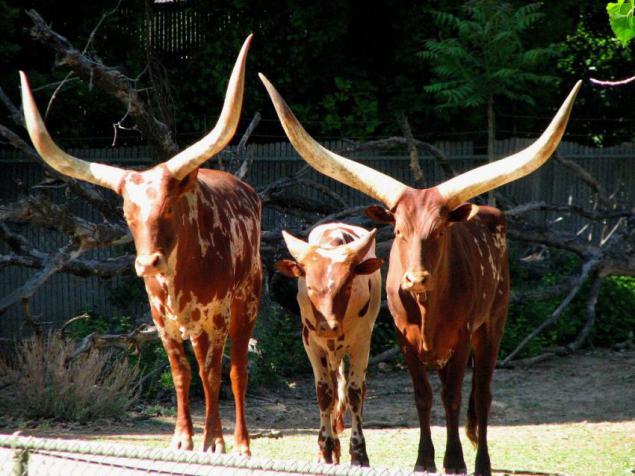
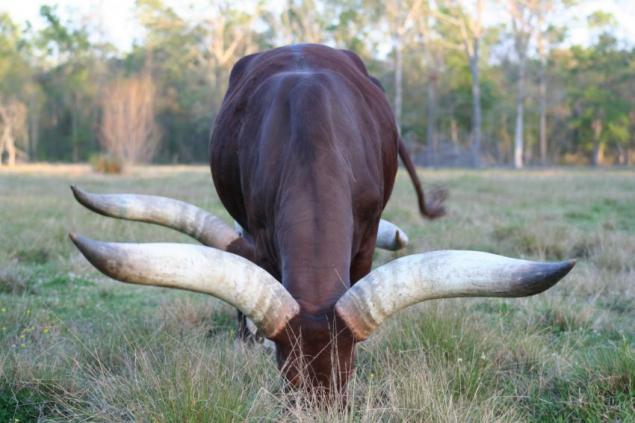
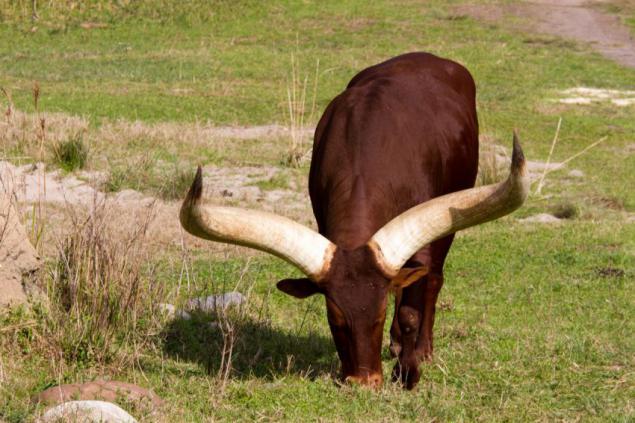

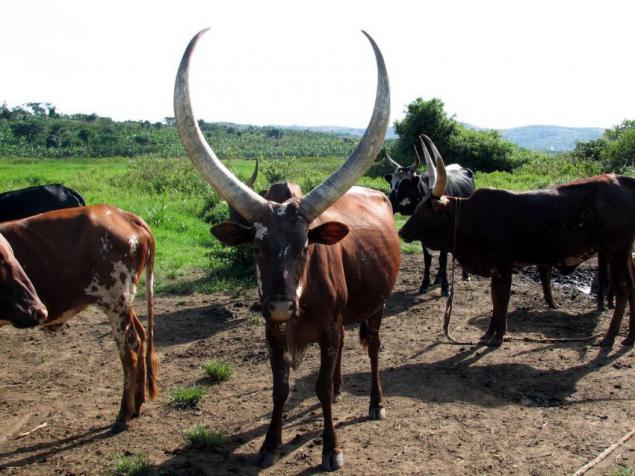

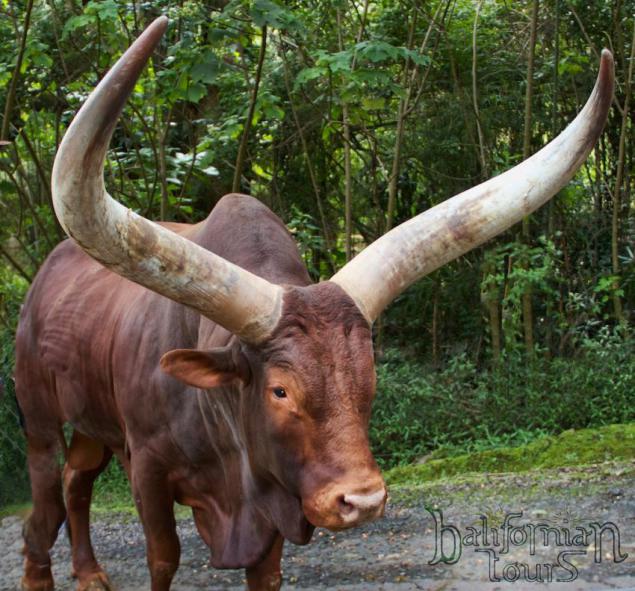


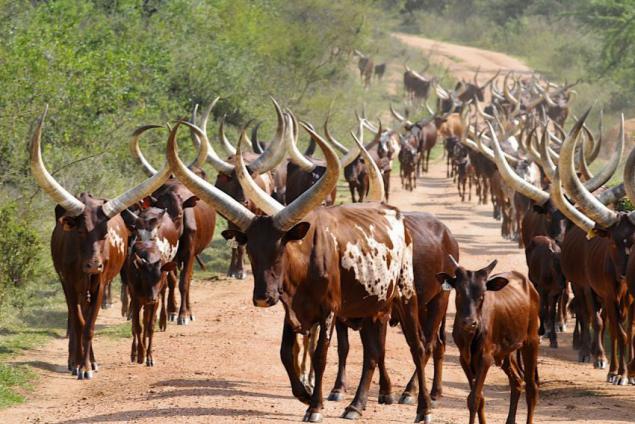
Source: masterok.livejournal.com

Since ancient times, the cows breed Ankole-vatusi considered sacred. They are almost never used as a source of meat, as the wealth of their owners is determined by the number of live cattle. All the attention was focused on the home side getting the maximum amount of milk, and even has developed a special technology.
All day the cow was grazing, and in the evening it fetches to the calf, which was allowed to make just a couple of sips to stimulate milk production. Then a cow milked, leaving little calf on a starvation diet. The same thing was repeated in the morning, eventually died young, and has not reached the age of maturity.
Historical homeland Watussi is Africa (Rwanda, Kenya, Uganda, Burundi), but due to its undemanding in food, after the 1960s, they quickly became widespread in other countries (in the United States, the Ukraine and the Crimea).

Weight Watussi adults can reach 400 to 750 kilograms. Newborn calves, compared with parents - fluff. They weigh only 14-23 kg and remain so for the first few months.
A distinctive feature of this breed bulls are their extra-long, powerful horns. Their total height may reach 1, 5 to 2, 4 meters. Instances with the largest horns are ranked as the king of the tribe and the economy become sacred.

These horns are amazing not only for its length, but also the ability to thermoregulation. They are pierced by many blood vessels in which blood in hot weather cooling airflow. Then it re-enters the primary circulatory system by lowering the body temperature of the animal.
Watussi very unpretentious in food. Due to the special structure of the digestive system, they are able to eat even a very rough and sparse nutrients to foods. Their stomach is designed so that it will acquire all of the nutrients that eats its owner.

In Ankole-vatusi highly developed instinct to protect the young. Settling down for the night, the adults lie in a circle, and all the calves are driven to the center, for greater safety.

Watussi ancestors, primitive wild bulls (tours), about four thousand years ago in Africa came from the banks of the Nile, where to this day on the walls of the pyramids preserved their images. Around the same time, India and Pakistan on the territory of today's Ethiopia and Somalia moved humped zebu bulls, which are gradually crossed the Egyptian cows, resulting in a kind of appeared, which became the basis of many breeds of African cattle.

In the East African countries - Rwanda and Burundi, the offspring of the Egyptian and Indian bull named "vatusi" and their neighbors, Ugandan tribes Nkole, was given the name of a new breed of "Ankole».

EU adult bulls reaches 600-730 kilograms of cows - 400-550, and the weight of the calf during the first months of life is not more than 15-23 kilograms.

The main distinguishing feature of Ankole-vatusi - their long horns. Tutsi tribe, which is primarily associated these animals, called them "inyambo" - a cow with very long horns. The length of the horns Ankole varies from 1, 5 to 3, 7 meters. The most preferred considered liroobraznaya or cylindrical shape.
The longer the horn, the wider they are based, and the greater their owner gets the honors, and the highest level of the hierarchy - admission to the herd of the king of the tribe and the appropriation of the sacred status. However, in a privileged position and have to pay, holding the horns on his head, weighing about 45 kilograms each.

The main value of the horns of the animal - its thermostatic properties. Horn-Ankole vatusi act as radiators, in which the blood circulates cooling air flow in such a state at odds over the body, lowering its temperature. It is an irreplaceable habitat Ankole, where temperatures can reach 50 degrees Celsius.


























Source: masterok.livejournal.com
